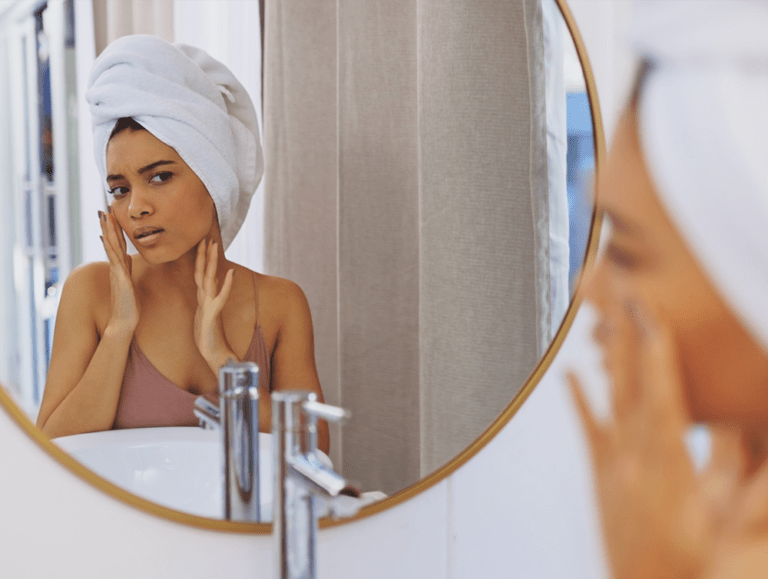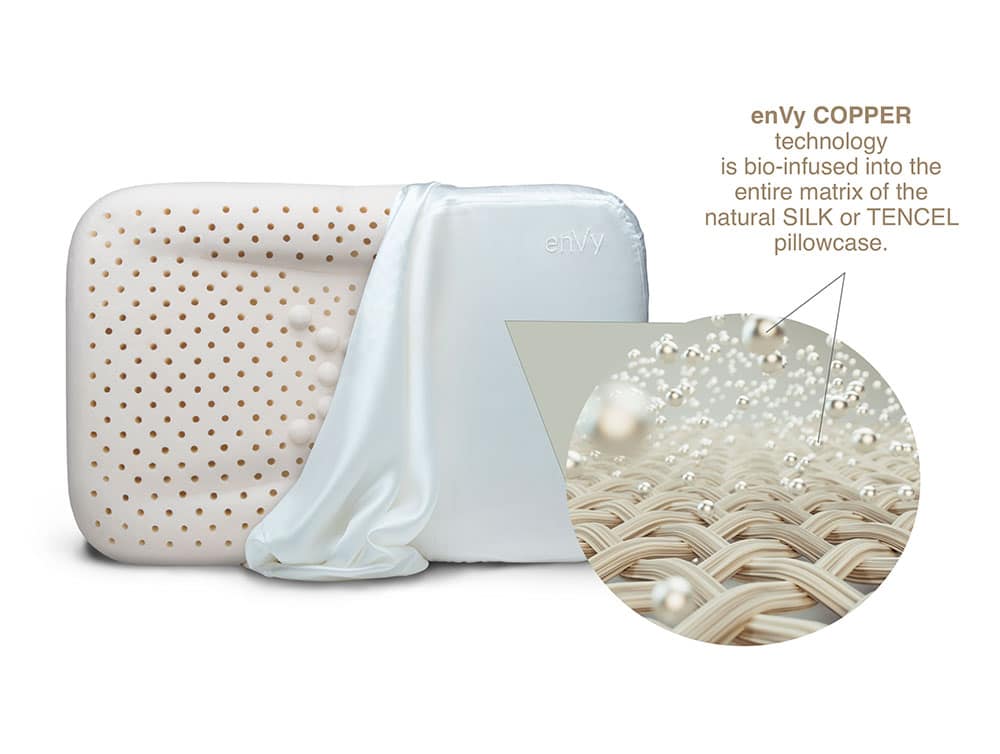
How often do you wash your bedsheets? Be honest.
While most of us are good about throwing in a load of laundry every week or so, bed sheets often get left out of the mix. Maybe it’s because we’re too busy to wash our sheets, we forget, or we’re just lazy, but I’ll bet if you survey a group of people, 90% will admit that they don’t wash their bedsheets more than twice a month – if that.
But who cares anyway? It’s not like our bedsheets are exposed to the outside world like our clothing.
Well, the results from a recent report from Amerisleep might change your mind about how important it is to keep your bed sheets and pillowcases clean…
How Dirty Are Your Bedsheets and Pillow Cases?
In their report, Amerisleep took samples from unwashed bed sheets and pillowcases over four weeks to assess the bacterial composition. What they found was, in a word, revolting. And when compared with bedsheets, pillowcases are by far the more disgusting of the two.
Here are some of the gruesome highlights[1]:
- After one week of not washing your pillowcases, they harbor 3 million bacteria – 17,000 times more bacteria than a toilet seat.
- After two weeks of not washing your pillowcase, they harbor 6 million bacteria – 332 times more bacteria than a faucet handle.
- After three weeks of not washing your pillowcase, they harbor 8.5 million bacteria – 405 times more bacteria than a kitchen sink.
- After four weeks of not washing your pillowcase, they harbor 12 million bacteria – over 39 times more bacteria than your pet’s food bowl.
And if you’re not completely grossed out yet, over 41% of the bacteria they found were gram-negative bacteria – the type that can cause serious infections[2].
And may I remind you; this is the surface you put your precious head on for (hopefully) at least seven or eight hours a night.
The Key To “Clean” Sleeping
We’ve all heard of clean eating, but I think it’s about time we talk about “clean” sleeping.
I know the above stats took me by surprise, but luckily (for me), I like to stay ahead of the curve on all things health and wellness. So I took a deep breath of relief when I realized that my pillowcase is already tailor-made to combat the bacterial onslaught that most people are dealing with. Yes, I have a self-cleaning pillowcase.
As a Biohacker, I’m constantly looking around for the best of the best in everything from food to supplements to apparel to…you guessed it…pillowcases.
What makes my pillowcase so special? The company I buy my pillows and pillowcases from infuses their fabrics with copper. If you haven’t heard of the enVy pillow, I highly recommend checking them out. The enVy pillow has an ergonomic design that Health Canada recognizes as a Class l medical device as it aligns the spine correctly, creating an ideal environment for restorative sleep.
But we’re not here to talk about my perfect ergonomic sleeping position – we’re here to talk about clean sleeping, which is where the copper infusion comes in.
Copper is a metal well-known for its antimicrobial properties, particularly in hospital settings where research shows that copper surfaces reduce HAI (Hospital Acquired Infections)[3][4].
Over time scientists and engineers have been able to harness these antimicrobial properties and apply copper to softer surfaces such as fabrics- but with limited success[5][6].
The enVy Pillow Company harnesses copper technology but takes it a step further using a Canadian-produced highly engineered atomic-level modification of copper with the ability for complete 100% copper coverage on every strand and substrand of their natural Mulberry SILK or eco-Soft TENCEL pillowcases. Previous technologies have only offered limited copper coverage (5 -15 % coverage) and only on synthetic fabrics such as polyester and nylon, which do not provide breathability or the skin health benefits of natural fabrics such as pure silk.
Beyond offering complete copper coverage, the enVy Copper process is permanently infused into the self-cleaning pillowcase with the impressive ability to eliminate 99.9% of pathogens within four hours, including the destruction of superbugs such as MRSA (Methicillin Resistant Staph Aureus)[7].
In other words, those bacteria trying to make a bee-line for your pillowcase won’t stand a chance on these copper-infused fabrics.
Additional Benefits of Sleeping With Copper
Copper-infused fabrics do more than self-sanitize.
In fact, copper provides a range of health benefits. For example, clinical studies demonstrate that continued exposure to copper-infused textiles significantly reduces facial wrinkles, skin sagging and enhances skin elasticity and general skin health[8][9].
It’s also a natural non-steroidal anti-inflammatory agent. Medical science has been using copper for many years in the treatment of pain as it assists in blocking the production and release of chemicals that cause inflammation[9][10].
Furthermore, due to copper’s antibacterial activity, the consistent use of copper-infused pillowcases or sleep masks may improve conditions like acne, rosacea, and blepharitis (eye infections)[6][11].
When we sleep with copper, we have an ally working around the clock, providing the best laziness hack: healing and protecting while we rest.
Takeaway
As outlined in my recent book, “Smarter Not Harder,” the human inclination towards what may seem like laziness is, in essence, a deep-seated drive for efficiency and survival. Our biological selves strive for efficiency, but the true art is learning how to harness this inherent propensity in ways that serve us best.
This approach has led me to some fascinating intersections of nature, technology, and innovation, one of which is the copper-infused enVy pillow. Does it make me lazy to want my pillow to clean itself? That’s your call. But it certainly has made me healthier and more efficient – a perfect embodiment of my ‘Work Smarter, Not Harder’ philosophy.
References
- https://amerisleep.com/blog/bacteria-in-your-bed/?sscid=81k7_gb5zh&affiliateID=314743
- https://www.cdc.gov/hai/organisms/gram-negative-bacteria.html
- Borkow, Gadi, and Jeffrey Gabbay. “Copper, an ancient remedy returning to fight microbial, fungal and viral infections.” Current Chemical Biology 3.3 (2009): 272-278.
- Schmidt, Michael G., et al. “Sustained reduction of microbial burden on common hospital surfaces through introduction of copper.” Journal of clinical microbiology 50.7 (2012): 2217-2223.
- Borkow, Gadi, and Jeffrey Gabbay. “Putting copper into action: copper?impregnated products with potent biocidal activities.” The FASEB journal 18.14 (2004): 1728-1730.
- Borkow, Gadi, Rachel Salvatori, and Vikram K. Kanmukhla. “Drastic reduction of bacterial, fungal and viral pathogen titers by cuprous oxide impregnated medical textiles.” Journal of Functional Biomaterials 12.1 (2021): 9.
- Borkow, Gadi. “Using copper to fight microorganisms.” Current Chemical Biology 6.2 (2012): 93-103.
- Borkow, G., et al. “Improvement of facial skin characteristics using copper oxide containing pillowcases: a double?blind, placebo?controlled, parallel, randomized study.” International Journal of Cosmetic Science 31.6 (2009): 437-443.
- Milanino, Roberto, and Virginia Buchner. “Copper: role of the endogenous’ and exogenous’ metal on the development and control of inflammatory processes.” Reviews on environmental health 21.3 (2006): 153-215.
- Song, Erfei, et al. “Copper fabric improves the metabolic profile of obese mice: Potential role of the gut microbiota.” Basic & Clinical Pharmacology & Toxicology 131.5 (2022): 355-363.
- Borkow, Gadi, et al. “Molecular mechanisms of enhanced wound healing by copper oxide?impregnated dressings.” Wound repair and regeneration 18.2 (2010): 266-275.













